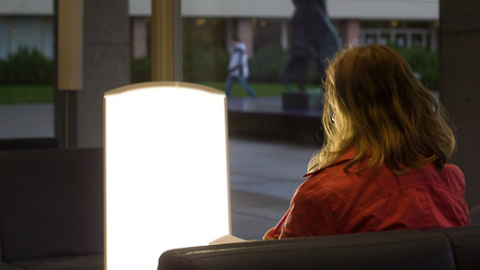Bright Lights to Brighten the Mind
As autumn comes about twenty per cent of Finns suffer from low moods and tiredness. Light therapy might offer help.

The seasonal affective disorder (SAD) is a disorder which occurs during autumn and winter. It is explained by the lower amount of daylight and possibly by the drop in temperatures.
Symptoms include increased appetite, weight gain and increased sleep. Individuals may also feel sluggish and slow.
The early symptoms start usually in October when the amount of light decreases and the weather can be rainy and dark. If you are prone to SAD, the symptoms will worsen by November.
- The quantity and severity of the symptoms depend on the individual. Genetics and the changing amounts of melatonin and serotonin in the central nervous system have a joint effect on the end result, says Professor of Psychiatry Simo Saarijärvi, who has studied SAD.
Professor Saarijärvi recommends light therapy as treatment.
- Light therapy helps with the most typical symptoms. There have been 20–30 controlled studies about the matter and they have given us scientifically valid evidence. Light therapy brightens the mood and makes you feel more energetic, Saarijärvi explains.
Light Bath Once a Day
Light therapy is administrated once a day from 30 minutes to two hours depending on the brightness of the light box. You should avoid looking directly into the light as it may cause eye irritation and headache. Those suffering from eye fundus illnesses should first contact their doctor before starting light therapy.
If light therapy and adding vitamin D to your diet doesn’t help with the symptoms or if they disturb your daily life you should go see a doctor.
- The issue could then be a severe depression, which is not treatable with just adding bright light to your life, says Saarijärvi.
If you feel like the light therapy is helping, you can continue it until the spring. By then the amount of natural light has increased and temperatures have started to rise so the symptoms usually go away.
Adaptation to Darkness and Coldness
The seasonal affective disorder is the most common seasonal mood disorder and it is more common in women than in men.
- Darkness and coldness have an effect on mammals. Humans, like all other mammals, react to darkness. For example bears go into hibernation. With humans the corresponding reaction is seasonal affective disorder, Saarijärvi says.
In addition to light therapy lamps, there are also wake-up lights and light therapy ear phones on the market. Professor Saarijärvi recommends only one of the before mentioned.
- Wake-up light is used as an alarm clock. The slowly increasing amount of brightness helps with waking up. In other words, the wake-up light actually works. There isn´t scientific proof of the effectiveness of ear lights so I can’t comment their functionality, Saarijärvi finishes.
Text: Susanna Eronen
Photos: Susanna Eronen, SS
Translation: SM